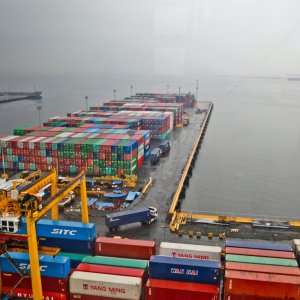
Mexican Health Chain Securing Drug, Supply Access
 By Miriam Bello | Senior Journalist and Industry Analyst -
Wed, 03/16/2022 - 11:23
By Miriam Bello | Senior Journalist and Industry Analyst -
Wed, 03/16/2022 - 11:23
Supply shortages, poor infrastructure, long wait times and high out-of-pocket expenditures have all compromised health access in Mexico. Private sector experts are now trying to fight these problems by granting the population access to healthcare at a cost-effective rate, using innovation and technology as cornerstones in their strategy.
The first signs of inconsistencies in drug deliveries came with changes to the Acquisition Law for medicines and medical supplies, which unleashed irregularities among local medicine manufacturers and distributors as they learned that new regulations involved a consolidated purchasing model that would centralize operations through INSABI. The federal government shunned distribution companies (which were in charge of consolidating supplies from different laboratories and distributing them) from the drug purchasing process. The move was meant to generate savings and support the current federal administration’s austerity and anti-corruption policies. Each public institution and state was now expected to compute its own orders, unlike the previous 2013-2018 system, which allowed IMSS to buy medicines for all its units, as well as for ISSSTE, PEMEX, SEDENA, SEMAR and other public health institutions of 22 states.
The complexity of this first change drove the government to implement a new adjustment, bringing UNOPS in as a supplier in the acquisition process and making INSABI the main purchaser and distributor of medicines for 2021-2024. This new acquisition process was set to begin in October 2020 but it was delayed to December 2020.
Since 2019, Mexico has seen dozens of protests, hundreds of appeals and over 550 complaints to the CNDH (National Commission for Human Rights) due to medicine shortages going back to 2019, according to Animal Político. By Oct. 1, 2021, INSABI had only delivered 9.5 percent of all the drugs requested by states, with the entities with the lowest percentage of drugs delivered being Mexico City with 0.3 percent of its orders fulfilled, Campeche with 1.7 percent, Coahuila with 2.2 percent, Sinaloa with 3.6 percent and Chiapas with 3.9 percent.
Beyond preventing proper treatment follow-up, the situation has increased out-of-pocket expenditure. According to Rafael Maciel, President of AMEGI, the use of generics in the public sector decreased by 22 percent in units and by 8.5 percent in value as a result of new acquisition processes, which caused many implementation challenges and led to further shortages. The decrease was mostly seen at IMSS, where 30 percent of the units it required were missing. “The shortages drove patients to seek medications in the private market. The majority of the missing drugs were for cancer or other high-impact diseases,” says Maciel.
The increased expenditure also reflected on pharmacy sales. Marcos Pascual, Commercial Director of ANAFARMEX, says that increasingly high demand for products drove the country’s pharmacy network to an expansion of 3,000 new points of sale. “This 20 percent increase in new pharmacies (will) bring our total members to 18,000 pharmacies around the country.”
Drug manufacturers have also had to prepare for political, natural and extraordinary events that could potentially threaten their deliveries. David Salas, Manufacturing Operations Director at Atramat, says that companies need to accept and recognize that in an uncertain scenario, they are all vulnerable. “By acknowledging this, an automatic self-defense instinct arises; we protect ourselves,” Salas says. Companies can learn from their own experiences with adversity, which provide the lessons needed to overcome a new challenge, further enhancing their experience. “A demanding individual effort is required to move forward no matter what is threatening us or when we experience setbacks. Without resilience, we will negatively impact our service to customers and patients,” he says.
In terms of logistics, distributors have worked hand in hand with laboratories to ensure the best distribution practices for drugs and medical equipment. In this process, big data has expedited the optimization of routes for logistics companies worldwide. Many logistics partners of medical companies are using logtech developments to provide better services. DHL’s DHLi solution, for example, allows customers to exchange information with companies to optimize their logistics, says Liliana Castillo Bautista, Head of Life Sciences and Chemicals Sales at DHL Global Forwarding México. This information is then readily available to customers in real time, providing insight into temperature, light and security of products en-route.
Effective manufacturing and logistics execution is not completely dependent on the private sector, however. Public and private sectors play complementary roles throughout the entire health chain to supply medications and medical supplies. “Regulators also play a key role in ensuring access to medications. In the case of generics, authorities need to work faster so generic drugs can reach the population on time,” says Américo García, Vice President and General Manager for Latin America at Apotex. By accelerating this process, regulators will further promote a framework that will propel quick access to new medications and supplies, he says.
Most importantly, efforts from both sectors are required to end public medicine shortages. “We all share the same end goal, which is to deliver medical supplies to the patient,” says Karla Báez Ángeles, Director of Access to Innovation at AMIIF. These efforts, according to Rafael Gual, Director General of CANIFARMA, need also go to the production of pharmaceutical chemicals in Mexico to avoid depending on Asian production chains.
To date, the public and private sectors have worked separately, with the former taking over most of the treatment of acute illnesses, according to García. “Mexico lives with acute and chronic illnesses and private entities, such as pharmacies, have been instrumental in covering these more urgent ailments.”
This current state of health delivery focuses primarily on physical health, with models oriented around the provider, offering fragmented and analog experiences that have negative consequences both for the patient’s health and for the country’s economy, says Alexandro Arias, Partner - Life Sciences and Heath Care Leader S-Latam at Deloitte. In the future, Arias hopes health access will secure drug, device and care delivery with a patient-centric model based on tech, supported by a public and private collaboration. “Today, there are unique opportunities to reform the underlying structures of public health,” he says.
















